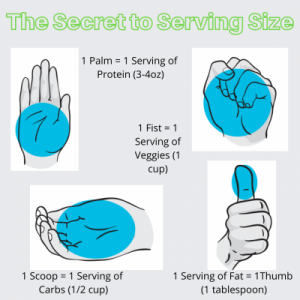Mindfulness in the Dining Hall
UConn Extension, the Department of Nutritional Sciences, and UConn Dining want to help you practice mindful eating in the dining hall.
Food Waste and You

There is always going to be some food waste when eating in the dining halls but as UConn students you can help to limit these numbers.
- Each student averages ~2.2 oz of food waste per dining hall entry
- 75,220 pounds of food wasted from September 1 to October 1 from all 9 dining halls
- That is about 37.61 tons of food
Think about the food you are leaving behind on your plate. Where is it going? It is scraped off the plate and trucked off to Quantum Bio Power (http://www.quantumbiopower.com/) where it is broken down into methane to power local businesses. Willimantic waste takes all the garbage and recycling that cannot be broken down at Quantum. All the leftover/untouched food from the cafes and dining halls are donated to the Covenant Soup Kitchen
Listening to Hunger Cues

Hunger cues are hard to follow, here is an easy guide to learning your physical hunger levels and hunger that is in your head.
- 1— Starving, weak, dizzy
- 2— Very hungry, cranky, low energy, lots of stomach growling
- 3— Pretty hungry, stomach is growling a little
- 4— Starting to feel a little hungry
- 5— Satisfied, neither hungry nor full
- 6— A little full, pleasantly full
- 7— A little uncomfortable
- 8— Feeling stuffed
- 9— Very uncomfortable, stomach hurts
- 10— So full you feel sick
Aim to eat a meal around 3-4 don’t wait until 1-2, that leads to overeating and not making mindful food choices. Stop when you get to 5-6.
Learning when to stop eating is important. Listen to your body… relax before you start eating, eat slowly and stop a quarter of the way through your meal and let your mind catch up to tell your brain if you are full.
When in the dining hall it is easy to grab anything in sight. Before you do that, stop and think about how hungry you are, what you have eaten already and then think back to your serving size needs to make a full nutritious meal.
The Secret to Serving Size

Do you ever wonder if you are eating enough? Or eating enough of the right foods? Use this portion guide when filling your plate or to-go box in the dining hall. Everyone has different nutritional needs but a good rule of thumb is for each meal to consume
- 1-2 palms of protein
- 1-2 fists of veggies
- 1-2 scoops of carbs
- 1-2 thumbs of fat dense foods
If you are a more active person increase these amounts for daily intakes.
Active Males
- 6-8 palms of protein
- 6-8 fists of veggies
- 6-8 scoops of carbs
- 6-8 thumbs of fat dense foods
Active Females
- 4-6 palms of protein
- 4-6 fists of veggies
- 4-6 scoops of carbs
- 4-6 thumbs of fat dense foods
Protein examples
- Chicken
- Fish
- Beef
Veggie examples
- Spinach
- Corn
- Carrots
Carb examples
- Pasta
- Cereal
- Rice
Fat dense food examples
- Peanut butter
- Mayo
- Cheese
Sources: https://www.precisionnutrition.com/wp-content/uploads/2019/09/Hand-portion-guide-FF.pdf
Content curated by Rachel Gordon